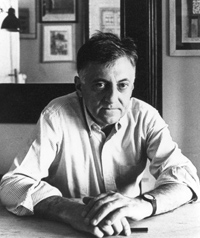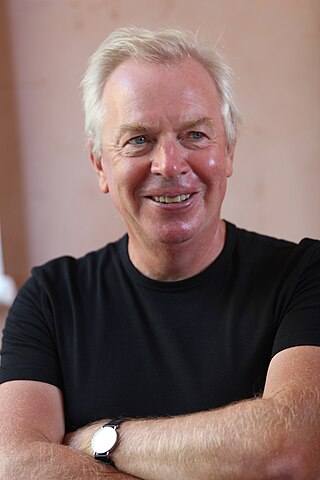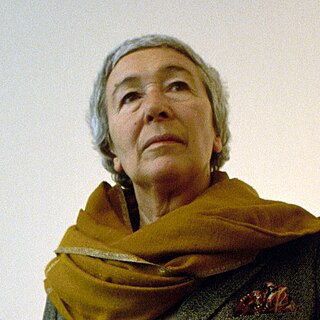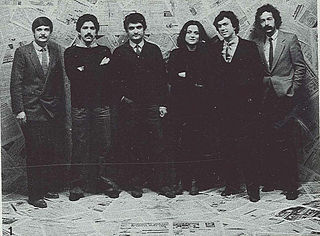
Aldo Rossi was an Italian architect and designer who achieved international recognition in four distinct areas: architectural theory, drawing and design and also product design. He was one of the leading proponents of the postmodern movement.

The Polytechnic University of Milan is the largest technical university in Italy, with about 42,000 students. The university offers undergraduate, graduate and higher education courses in engineering, architecture and design. Founded in 1863, it is the oldest university in Milan.

Sir David Alan Chipperfield, is a British architect. He established David Chipperfield Architects in 1985, which grew into a global architectural practice with offices in London, Berlin, Milan, and Shanghai.

Ernesto Nathan Rogers was an Italian architect, writer and educator.

Achille Castiglioni was an Italian architect and designer of furniture, lighting, radiograms and other objects. As a professor of design, he advised his students "If you are not curious, forget it. If you are not interested in others, what they do and how they act, then being a designer is not the right job for you."

Gaetana "Gae" Aulenti was an Italian architect and designer who was active in furniture design, graphic design, stage design, lighting design, exhibition and interior design. She was known for her contributions to the design of important museums such as the Musée d'Orsay in Paris, the Contemporary Art Gallery at the Centre Pompidou in Paris, the restoration of Palazzo Grassi in Venice, and the Asian Art Museum of San Francisco. Aulenti was one of only a few women architects and designers who gained notoriety in their own right during the post-war period in Italy, where Italian designers sought to make meaningful connections to production principles, and influenced culture far beyond Italy. This avant-garde design movement blossomed into an entirely new type of architecture and design, one full of imaginary utopias leaving standardization to the past.

Marco Zanuso was a leading Italian Modernist architect and designer.

Franco Albini was an Italian Neo-Rationalist architect, designer and university instructor in design.

In architecture, Rationalism is an architectural current which mostly developed from Italy in the 1920s and 1930s. Vitruvius had claimed in his work De architectura that architecture is a science that can be comprehended rationally. The formulation was taken up and further developed in the architectural treatises of the Renaissance. Eighteenth-century progressive art theory opposed the Baroque use of illusionism with the classic beauty of truth and reason.
Massimo Carmassi is an Italian architect.

Italian modern and contemporary architecture refers to architecture in Italy during the 20th and 21st centuries.

STUDIODADA was an Italian architectural and design office which started in 1977 during Italy's radical period. It completed interior design and architecture projects in Italy and abroad. It ceased to operate in 1988.

Vittorio Magnago Lampugnani is an architect, architectural theorist and architectural historian as well as a professor emeritus for the History of Urban Design at the Swiss Federal Institute of Technology Zurich. He practices and promotes a formally disciplined, timelessly classic, and aesthetically sustainable form of architecture, one without modernist or postmodernist extravagances. As an author and editor of several acclaimed works of architectural history and theory, his ideas are widely cited.
Arduino Cantafora, Italian-Swiss architect, painter, and writer. He was the student of Aldo Rossi
Paolo Brescia is an Italian architect and founder of OBR Open Building Research. He graduated with a degree in architecture from the Politecnico di Milano in 1996 and had his academic fellowship at Architectural Association in London. After working with Renzo Piano, he founded in 2000 OBR with Tommaso Principi to investigate new ways of contemporary living, creating a design network among Milan, London, Mumbai and New York. He combines his professional experience with the academic world as guest lecturer in several athenaeums, such as Accademia di Architettura di Mendrisio, Kent State University, Aalto University, University of Oulu, Academy of Architecture of Mumbai, College of Architecture of Pune, Mimar Sinan Fine Art University, Hacettepe University, Florida International University in Miami. He was university professor in charge at Politecnico di Milano (2004-2005) and University of Genoa (2013-2015). With OBR his projects have been featured in international exhibitions, including at X Biennale di Architettura in Venice 2006; RIBA Royal Institute of British Architects in London 2007; V Bienal de Arquitetura in Brasilia 2007; XI Bienal Internacional de Arquitectura in Buenos Aires 2007; AR Award Exhibition in Berlin 2008; China International Architectural Expo in Beijing 2009; International Expo in Shangai 2010; UIA 24th World Congress of Architecture in Tokyo 2011; Energy at MAXXI in Rome 2013; Italy Now in Bogotá 2014; Small Utopias in Johannesburg 2014; XIV Biennale di Architettura in Venice 2014; Triennale di Milano in Milan 2015 and Cooper Hewitt Smithsonian Design Museum in New York 2016.

Aldo Cibic is an Italian designer.
Angelo Torricelli is an Italian architect.
Michele de Lucchi is an Italian architect and designer.

Marc Kocher is a Swiss architect, known for his residential building designs.














